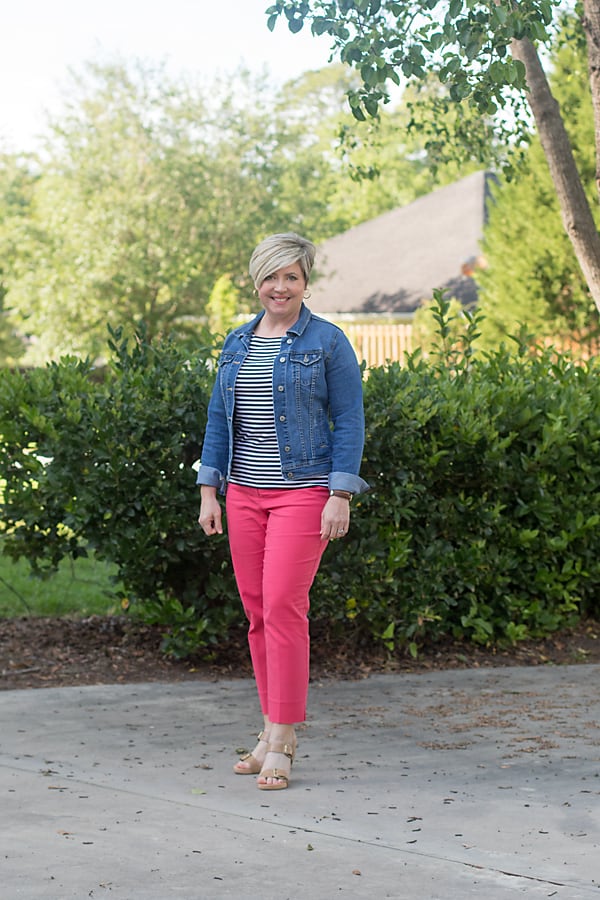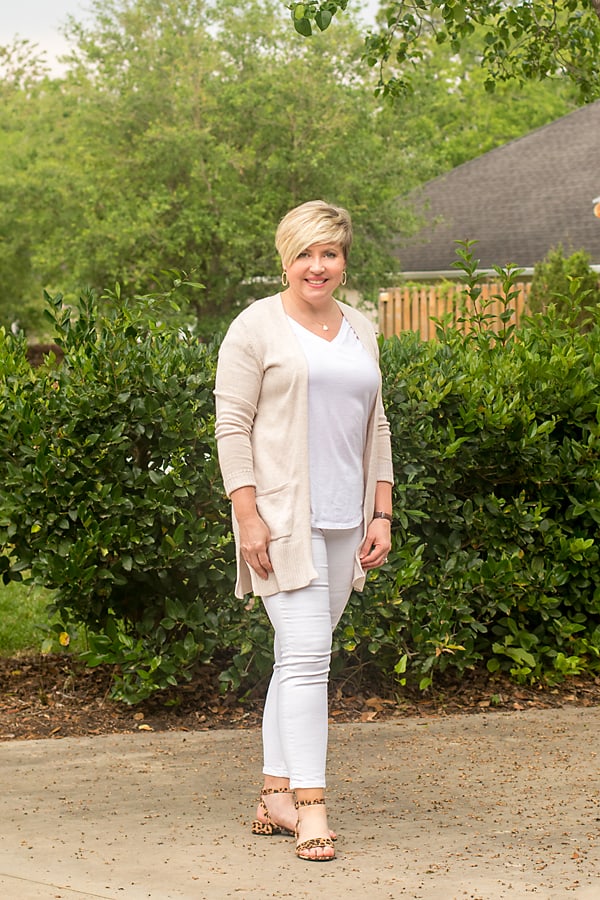Happy Earth Day! Aren’t you glad God created such a wonderful place for us to live? Our earthly home is a wonderful place, but it comes with some responsibilities. We have a duty to take care of our earth, and that includes being responsible with fashion.
The fashion industry leaves a huge carbon footprint.
Our carbon footprint is the total amount of greenhouse gases produced to directly or indirectly support human activities, usually expressed in equivalent tons of carbon dioxide (CO2). Everything we do, including producing necessities like food, leaves a mark. Operating your computer for 32 hours (ahem, blogging?) or producing 1/3 of the American cheeseburger (one cheeseburger!) add 1kg of CO2 to your carbon footprint (source).
The fast fashion industry in particular has been getting negative reviews for its impact on our planet. Fast fashion is defined in several ways, but refers mostly to the cheap, rapid production of trendy items. Instead of the old way of releasing clothing per season, new lines and clothing are released sometimes weekly to monthly. Garments are often low quality and meant to be worn only one season and then tossed. Retailers like Old Navy, H&M, and Forever 21 fall into the category of fast fashion.
Often these manufacturers participate in practices such as using toxic chemicals, dangerous dyes, and synthetic fabrics that seep into water supplies where the clothing is made and at home where the clothing is washed. The workers in many countries where these items are made are underpaid and treated poorly.

Denim jacket- Old Navy; top- JCrew Factory; similar pants- Loft; shoes- Aerosole
So how can we be more responsible with fashion?
Thred Up has an awesome and fun fashion footprint calculator. I actually scored pretty low in that area. My most offending practices are shopping online and returning items. However, I live about an hour one way from many of the retailers I shop at so my online shopping is probably less offending than me driving my car to those locations. The calculator suggests some great ways to lessen your fashion footprint.
Let’s look at some of these ways to be more responsible with fashion.
1 Buy less. Well, that’s no fun. Just kidding. While it is fun to add new pieces to our wardrobes here and there, and play with trends, most of us do not need new clothes at the rate we buy them. After this experience with COVID 19 many of us may have a new perspective on spending and clothing. Buying less can actually be more fun when you love your wardrobe and have the right pieces. Learning to remix your wardrobe and create new outfits from what you have can be a lot of fun.
Related: The Easiest Summer Outfit 4 Ways
2 Buy sustainable. What’s sustainable? It takes into account the full lifecycle of the product — from the design, sourcing, and production processes — and looks at everyone and everything being affected by it to include the workers and communities where it’s produced and the consumers who purchase it. Sustainable is meant to last longer, and be used or recycled. No one sustainable brand can focus on all factors, but many focus on water consumption, chemicals, reducing waste, and using organic fabrics vs those treated with chemicals. Sometimes sustainable is also referred to as ethical fashion. Ethical focuses more on the treatment of workers and fair wages. If you choose to shop sustainable brands, decide which issue is the most important to you – water consumption vs chemical use, etc. Is the brand really supporting what’s important to you. Don’t get caught up in just the label “sustainable.” Shopping used can also be considered sustainable, so consider used before new. Buying quality used clothing is always a great way to be responsible with fashion.
Related: Why and how to shop secondhand
3 Repair– Don’t throw things away. Learn to sew on buttons and mend tiny holes. One of the most irresponsible things is to just throw clothes in the trash. Donate it if you don’t want to repair it or don’t want it anymore. Find a textile recycling outlet to donate to if something is beyond repair. It may still be recyclable.
4- Have a clothing swap with friends or your ladies church group. Take the clothing you no longer want that’s still in good shape and swap it for something from someone else’s closet. This would be a fun way to be more responsible with fashion.
5- Take better care of what you already have. Wash your clothing less. Hang or lay flat to dry. Washing less will have an effect on the environment and the life of your clothes. Spot clean stains instead of washing the whole garment.

Cardigan- Old Navy; tshirt- Target; jeans- Loft; shoes- Target
I will admit I don’t purchase from many of the sustainable brands and most of that has to do with budget. I do shop a lot from Old Navy and several places that are considered fast fashion, but I have never purchased those items with a “fast fashion attitude.” I have a pair of Old Navy jeans that I’ve had for 10-12 years. I’ve forgotten exactly how long but its been years. My casual wardrobe sees less wear so I can buy lower quality in that area and get more wear from those pieces. Taking care of those items also goes a long way in extending the life of them. So, if Old Navy is your budget, then don’t feel bad about your fashion footprint. Exercise some of the other ways above to reduce negative effects and do your part.
Other ways to help take care of our earth outside of fashion include:
- Use environmentally-friendly, non-toxic cleaning products.
- Replace inefficient incandescent light bulbs with efficient CFLs or LEDs. Reduce your carbon footprint by 450 pounds a year.
- Carpool, ride your bike, use public transportation or drive an electric or hybrid car. Reduce your carbon footprint by one pound for every mile you do not drive.
- Keep your tires properly inflated and get better gas mileage. Reduce your carbon footprint 20 pounds for each gallon of gas saved.
- Change your car’s air filter regularly.
- Stop using disposable plastics, especially single-use plastics like bottles, bags and straws. I have these straws for carrying to restaurants.
- Recycle paper, plastic and glass. Reduce your garbage by 10% and your carbon footprint by 1,200 pounds a year.
- Donate your old clothes and home goods instead of throwing them out. When you need something, consider buying used items.
- Use cloth towels instead of paper ones. I recently purchased these for cleaning.
- Change your paper bills to online billing. You’ll be saving trees and the fuel it takes to deliver your bills by truck.
- Read documents online instead of printing them.
- When you need to use paper, make sure it’s 100% post-consumer recycled paper.
- Use reusable bottles for water, and reusable mugs for coffee.
- Bring reusable bags when you shop.
- Pack your lunch in a reusable bag.
- Turn off and unplug electronics you’re not using. This includes turning off your computer at night.
- Turn off lights when you leave a room.
- Recycle batteries from small appliances and your electronics. Use rechargeable batteries instead! I love these and use them in my camera flash, mouse and keyboard.
- Move your heater thermostat down two degrees in winter and up two degrees in the summer to reduce your carbon footprint by 2,000 pounds.
- Run your dishwasher only when it’s full to save water and energy.